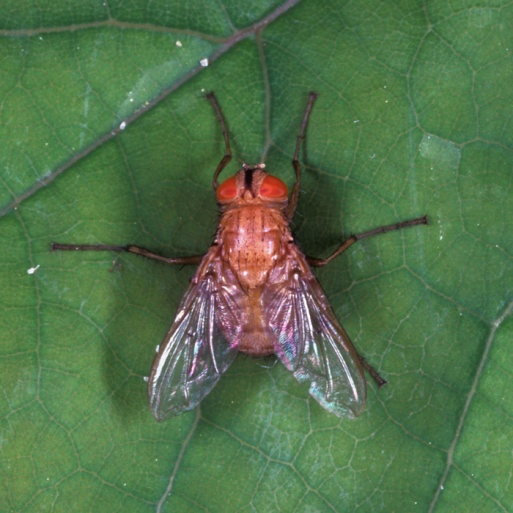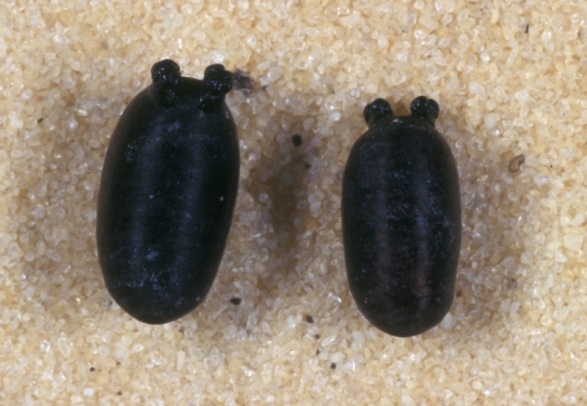
Ormia depleta (Wiedemann)
(Insecta: Diptera: Tachinidae)
Ormia depleta is a parasitoid of mole crickets in the genus Scapteriscus, of which the following three species are pests in Florida: shortwinged mole cricket (Scapteriscus abbreviatus Scudder), southern mole cricket (Scapteriscus borellii Giglio-Tos), and tawny mole cricket (Scapteriscus vicinus Scudder). The parasitoid’s big red eyes and its Brazilian origin have coined the name “Brazilian red-eyed fly” for this species.
Besides conspicuous red eyes, the adult fly has a reddish brown head, thorax, and abdomen with brown legs and transparent wings. The first instar, also called planidial larva, is highly sclerotized; that is, it has a hardened cuticle. It has legs, which is unusual for fly larvae, and a flat body. Subsequent instars lack legs and eyes and are soft-bodied. The oval pupae are dark brown.
Adult female flies are active at night and find their host by following the sound of the mole cricket’s song. Females larviposit one first instar onto the cricket. This planidial larva burrows into the cricket’s body cavity and develops within about a week. The last instar exits the dead host and pupates in the soil. At laboratory temperatures of 23-25C, complete development to the adult takes about 11 days.
Ormia depleta is native to South America and was brought to Florida, under quarantine, in the 1980s to establish a rearing program for releases to manage mole crickets. Releases were made during 1988 to 1992, and by 1994, populations of Ormia depleta were established in at least 37 counties from Miami-Dade in South Florida to Alachua in the north.
Images
To save the Web-optimized images shown below to your hard drive:
PC users: right click to "Save Picture (or Image) As..."
Mac users: click and drag to your desktop.

Adult of Ormia depleta (Wiedemann)
(Photographer: Lyle Buss, University of Florida)

Pupae of Ormia depleta (Wiedemann)
(Photographer: Lyle Buss, University of Florida)